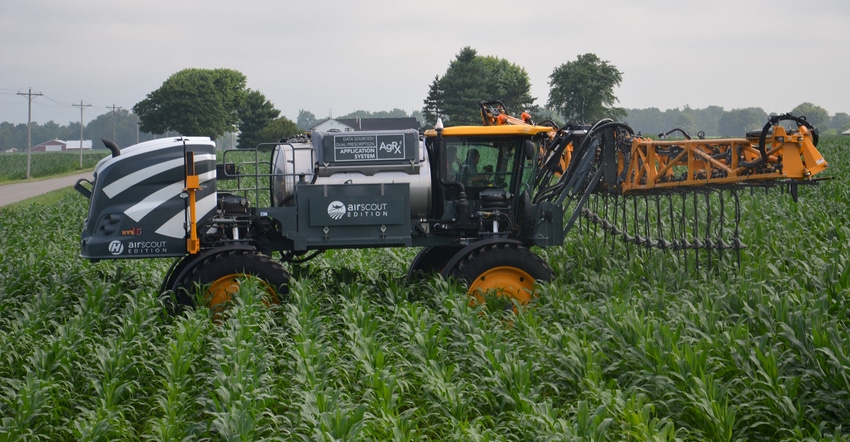May 2, 2018

We’re getting ready to sidedress nitrogen for corn. We applied 60 pounds per acre of actual N as starter. I want to apply the rest now. My brother wants to apply half of what we still need now, and hire a dealer to apply the rest with Y-drops just before tasseling. I don’t think it will pay for the cost of the application. What do you think we should do?
This month’s panel of Indiana certified crop advisers includes: Don Burgess, agronomist, A&L Great Lakes Labs, Fort Wayne; Jesse Grogan, corn product development manager for AgReliant Genetics, Lafayette; and Bryan Overstreet, Jasper County Extension ag educator.
Burgess: The ideal time for a sidedress application depends on the weather. Research has repeatedly shown that corn can take up a large amount of the crop’s total nitrogen, by most accounts 30% to 40%, during reproductive stages. This would suggest that where 60 pounds of nitrogen was applied as starter, splitting the remaining nitrogen into two applications, with approximately half before rapid growth stage and half immediately prior to tasseling, would best mirror crop needs.
However, where late sidedress applications are most beneficial is where conditions favoring N loss are present early. Heavy rainfall can lead to loss of N, and additional N may be needed later. However, later N applications may also be limited by weather. If field conditions are too wet to allow for late application, or so dry after application that fertilizer dribbled at the surface isn’t moved into the root zone, it may not help. If a delay in getting the N into the crop leads to a deficiency, this may cost yield. Therefore, it would likely be most beneficial to supply the N needs of the crop with the early sidedress application, and use the later application if wet conditions lead to a need for additional N.
Grogan: Y-drops are efficient where N is delivered at the base of plants in the row. Y-drops before tasseling can improve yields, but timing is just as important as placement. It’s a matter of if it gets done when needed.
Remember that late N applications don’t always work. 2015 was a wet year when N was denitrified and lost; therefore, late applications were more profitable. 2016 was one of those years with frequent rains that increased soil biological activity and mineralization for improved organic N availability. Yields weren’t improved with late-season N. Then 2017 was another year when late N application was effective.
Almost all new hybrids utilize nitrogen more efficiently and stay green longer than those prior to 2000. More nitrogen is needed past the flowering stage for maximum yield. It’s usually 40 to 60 pounds of actual nitrogen per acre.
Overstreet: Jim Camberato, Extension soil fertility specialist at Purdue University, has done studies on this question. On average, the split application has yielded slightly better, but it hasn’t consistently been the best option.
It may depend on what losses you have between now and tasseling. If you have a very wet period, it could pay. I might do some trials with Y-drops. Do strips with both methods so you can get a good feel for how it works for you. This will take extra time but could pay off in the long run. Bob Nielsen, Purdue’s Extension corn specialist, has set up on-farm research protocols.
You May Also Like




